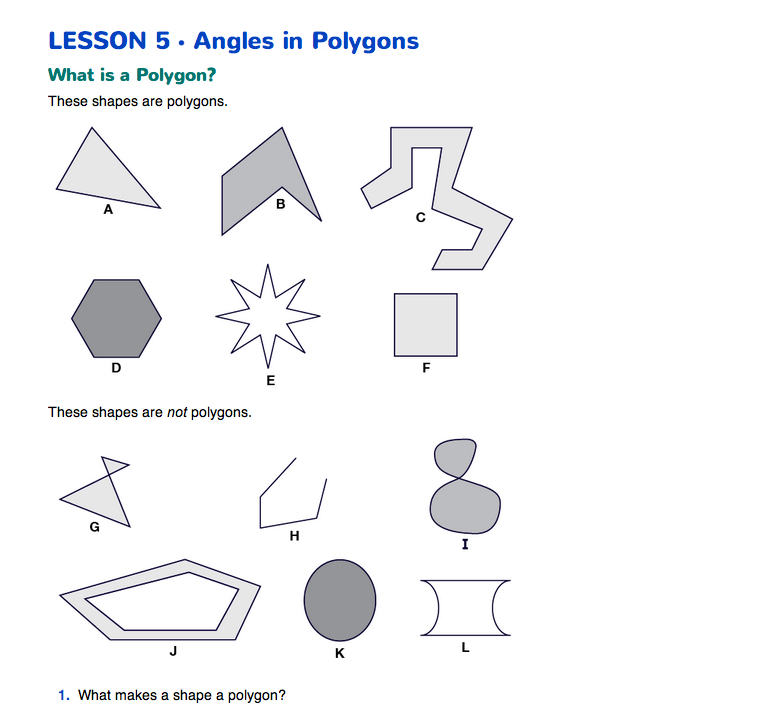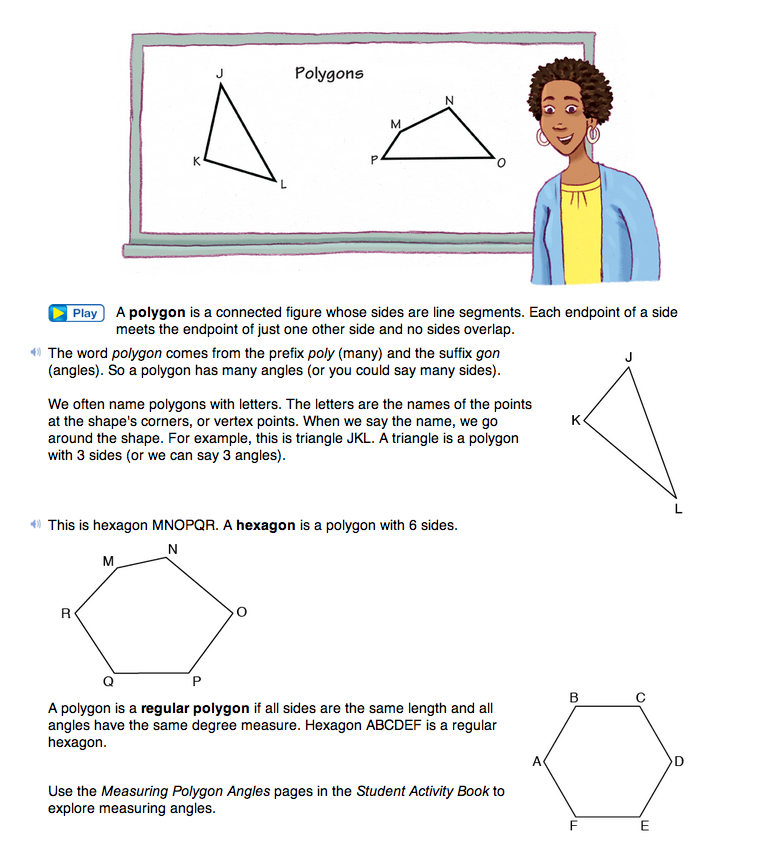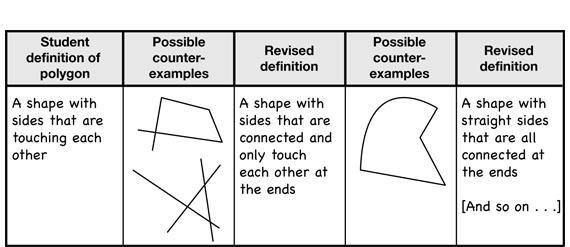Angles in Polygons
Est. Class Sessions: 3Developing the Lesson
Part 1. Polygons and Angles
What Is a Polygon? Lead a class discussion about students' prior knowledge of polygons. At this point, allow students to share their ideas about polygons, but do not evaluate these ideas yet.
Ask:
Record a selection of student responses near the word polygon on the Geometry Word Chart. Responses need not align exactly with a correct mathematical definition at this point. Representations on the chart can and should be adjusted over the course of the lesson as understanding of concepts becomes more refined.
Have students look at the shapes on the first Angles in Polygons page in the Student Guide. Display the What Is a Polygon? Master. Allow students a minute to study the shapes that are polygons and those that are not. Lead a classroom discussion about Question 1.
Ask:
Ask students to work with a partner to write down a definition they can agree on. Then have several students share their definitions with the class. Invite responses to each definition presented.
Ask:
Allow students to draw shapes on the board to illustrate counter-examples that do not fit the proposed definition. If students cannot think of counter-examples, suggest some of your own. Figure 1 shows a possible student response to Question 1, and several counter-examples that require the definition to be further refined. Continue with the class in this way toward a working definition of a polygon.
Once the class agrees on a working definition, write it on the Geometry Word Chart. Allow students to use a ruler to draw a few examples of polygons on the chart. Now read with the class the definition of polygon in the Student Guide.
Ask:
Name Polygons. Read the paragraphs in the Student Guide about naming polygons. To demonstrate naming polygons, label the vertex points of the polygons students drew on the Geometry Word Chart. Then ask students to say the names of each polygon.
Ask:
Assign Questions 1–4 in the Homework section of the Student Guide.














